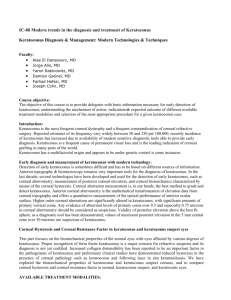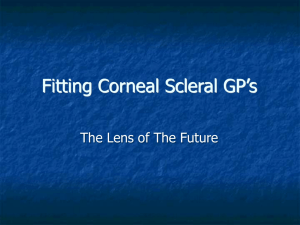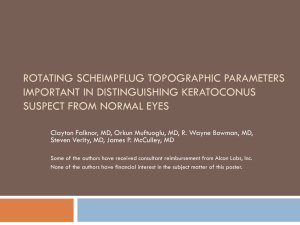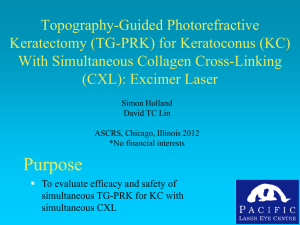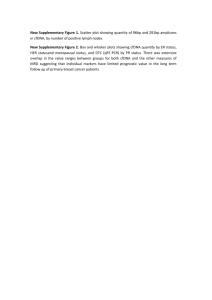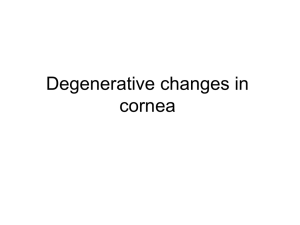Supplementary Figure Legends Supplementary Figure 1a: Single
advertisement
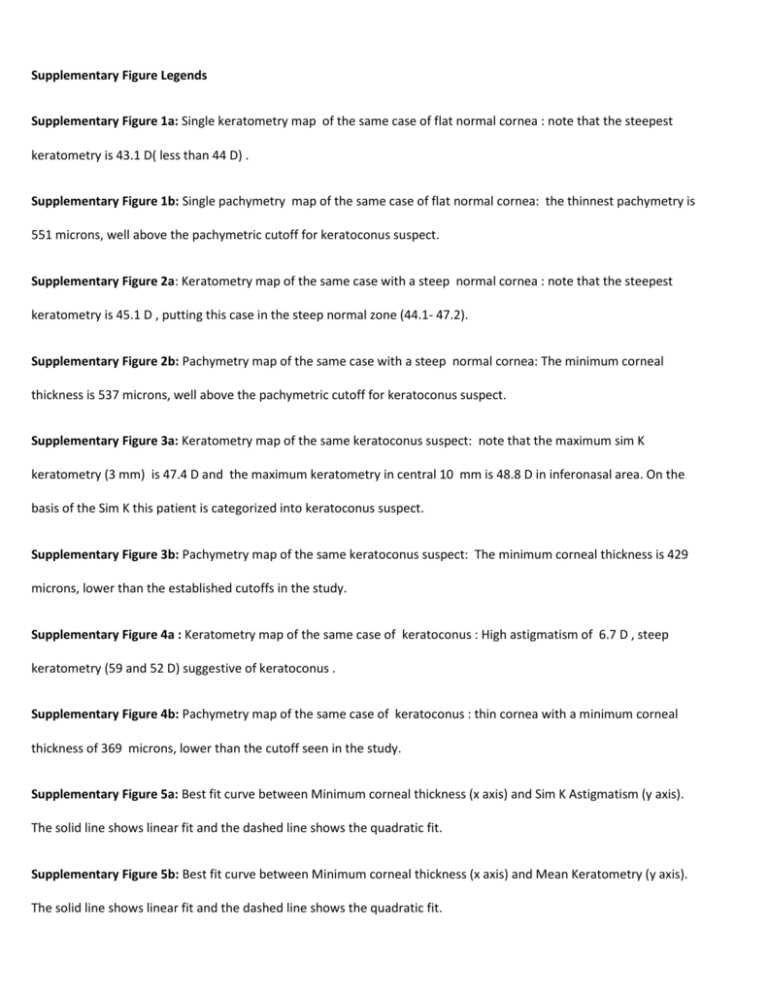
Supplementary Figure Legends Supplementary Figure 1a: Single keratometry map of the same case of flat normal cornea : note that the steepest keratometry is 43.1 D( less than 44 D) . Supplementary Figure 1b: Single pachymetry map of the same case of flat normal cornea: the thinnest pachymetry is 551 microns, well above the pachymetric cutoff for keratoconus suspect. Supplementary Figure 2a: Keratometry map of the same case with a steep normal cornea : note that the steepest keratometry is 45.1 D , putting this case in the steep normal zone (44.1- 47.2). Supplementary Figure 2b: Pachymetry map of the same case with a steep normal cornea: The minimum corneal thickness is 537 microns, well above the pachymetric cutoff for keratoconus suspect. Supplementary Figure 3a: Keratometry map of the same keratoconus suspect: note that the maximum sim K keratometry (3 mm) is 47.4 D and the maximum keratometry in central 10 mm is 48.8 D in inferonasal area. On the basis of the Sim K this patient is categorized into keratoconus suspect. Supplementary Figure 3b: Pachymetry map of the same keratoconus suspect: The minimum corneal thickness is 429 microns, lower than the established cutoffs in the study. Supplementary Figure 4a : Keratometry map of the same case of keratoconus : High astigmatism of 6.7 D , steep keratometry (59 and 52 D) suggestive of keratoconus . Supplementary Figure 4b: Pachymetry map of the same case of keratoconus : thin cornea with a minimum corneal thickness of 369 microns, lower than the cutoff seen in the study. Supplementary Figure 5a: Best fit curve between Minimum corneal thickness (x axis) and Sim K Astigmatism (y axis). The solid line shows linear fit and the dashed line shows the quadratic fit. Supplementary Figure 5b: Best fit curve between Minimum corneal thickness (x axis) and Mean Keratometry (y axis). The solid line shows linear fit and the dashed line shows the quadratic fit. Supplementary Figure 5c: Best fit curve between Minimum corneal thickness (x axis) and Maximum Keratometry in the central 10 mm (y axis) . The solid line shows linear fit and the dashed line shows the quadratic fit. Supplementary Figure 5d: Best fit curve between difference in minimum& central corneal thickness (x axis) and Sim K Astigmatism (y axis) . The solid line shows linear fit and the dashed line shows the quadratic fit. Supplementary Figure 5e: Best fit curve between difference in minimum& central corneal thickness (x axis) and Mean Keratometry (y axis). The solid line shows linear fit and the dashed line shows the quadratic fit. Supplementary Figure 5f: Best fit curve between difference in minimum& central corneal thickness (x axis) and Maximum Keratometry in the central 10 mm (y axis) . The solid line shows linear fit and the dashed line shows the quadratic fit. Supplementary Figure 6a: Stratified mean and standard deviation plots of the central corneal thickness of the four keratometric groups (flatter normal, steeper normal, keratoconus suspect and keratoconus). The solid black square denotes the means and the upper and lower bars denote the plus and minus two standard deviation values. Supplementary Figure 6b: Stratified mean and standard deviation plots of the minimum corneal thickness of the four keratometric groups (flatter normal, steeper normal, keratoconus suspect and keratoconus). The solid black square denotes the means and the upper and lower bars denote the plus and minus two standard deviation values. Supplementary Figure 6c: Stratified mean and standard deviation plots of the difference between central & minimum corneal thickness of the four keratometric groups (flatter normal, steeper normal, keratoconus suspect and keratoconus). The solid black square denotes the means and the upper and lower bars denote the plus and minus two standard deviation values. Supplementary Figure 6d: Stratified mean and standard deviation plots of the normalized pachymetric difference index of the four keratometric groups (flatter normal, steeper normal, keratoconus suspect and keratoconus). The solid black square denotes the means and the upper and lower bars denote the plus and minus two standard deviation values.

